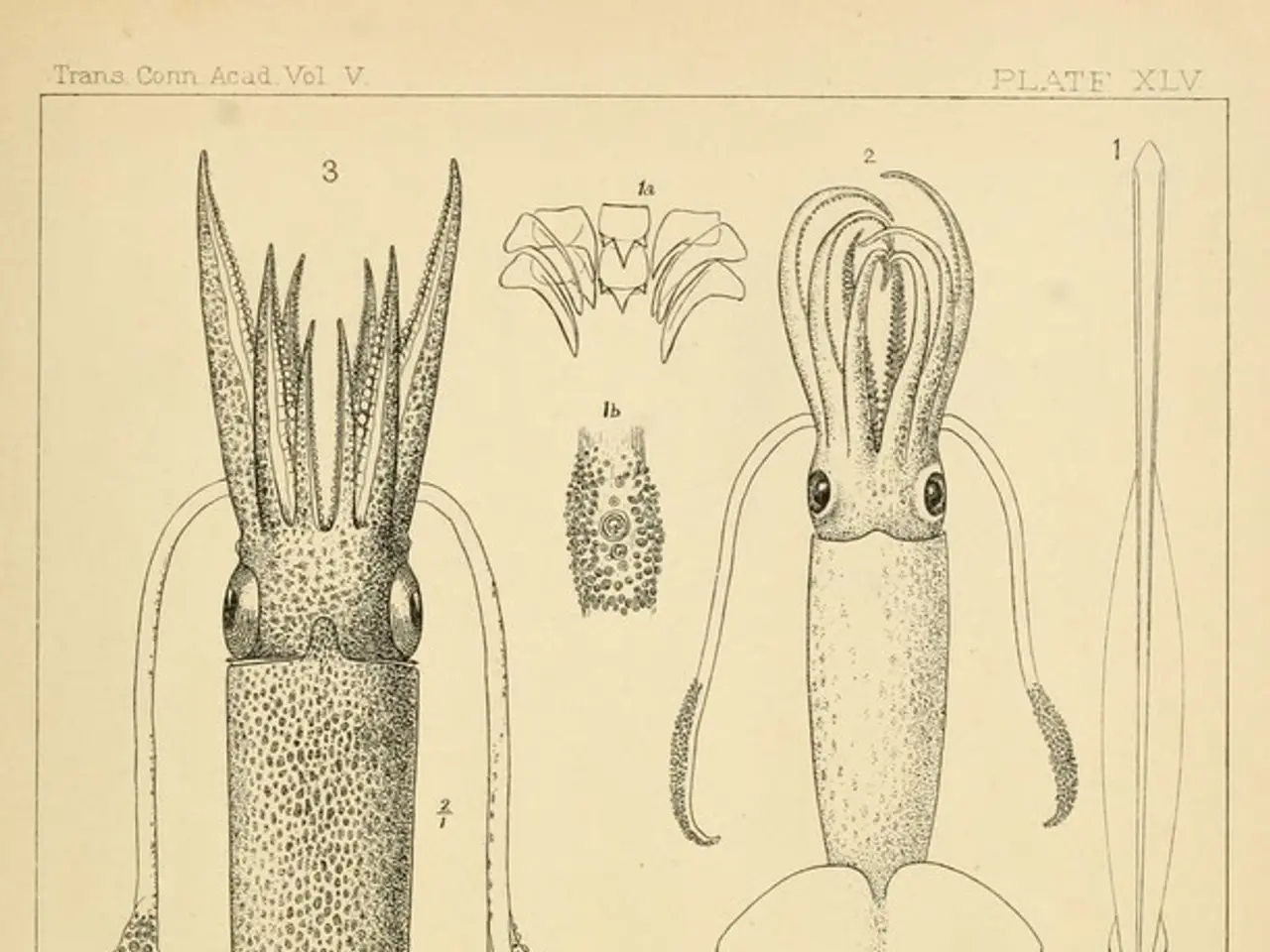Unexpectedly high occurrence of bare skin skeletal structures
In a groundbreaking study, researchers have discovered hidden bony plates, known as osteoderms, in 29 Australo-Papuan monitor lizard species, marking a significant increase from previously known cases among these iconic Australian reptiles, commonly known as goannas [1][2][4].
The extensive study, which involved the examination of over 1,300 reptile specimens using micro-computed tomography (micro-CT) in major museum collections around the world, has shed new light on the potential functions of these bony structures in these lizards [1][2].
The new data suggests that osteoderms could serve various purposes, including:
- Protection: Acting as bony armor to defend against predators or environmental hazards.
- Heat regulation: Assisting in controlling body temperature by affecting heat absorption or dissipation.
- Mobility support: Helping structural support during movement.
- Calcium storage during reproduction: Serving as a mineral reservoir to manage calcium needs when producing eggs or offspring [1][2][3].
This discovery reshapes our understanding of reptile evolution and suggests that osteoderms might have evolved as an adaptive response to Australia's harsh environments [3]. While osteoderms are known from other animals like crocodiles, armadillos, and some dinosaurs, their presence in goannas points towards a wider and more complex evolutionary role [1][3].
The study, led by Roy Ebel from the Museums Victoria Research Institute and the Australian National University, was published recently in the Zoological Journal of the Linnean Society [1][2][3][4]. The research team, which included collaborators from Australia, Europe, and the US, focuses on the repeated acquisition of osteoderms throughout the squamate tree of life and the underlying selective pressures.
The findings compile the first comprehensive catalogue of osteoderms in squamate reptiles, laying important groundwork for future large-scale and systematic approaches to studying osteoderm function [1][2][3]. This new understanding could inspire biomimetics and provide new insights into evolutionary trajectories and constraints that shaped present-day biodiversity.
[1] Ebel, R., et al. (2025). The evolution of osteoderms in squamate reptiles: a large-scale global study. Zoological Journal of the Linnean Society.
[2] Australian National University. (2025, July). Hidden bony plates in Australian monitor lizards revealed in large-scale study. ScienceDaily.
[3] Museums Victoria. (2025, July). New study reveals hidden bony plates in Australian monitor lizards. ScienceDaily.
[4] University of California, Berkeley. (2025, July). New study reveals hidden bony plates in Australian monitor lizards. ScienceDaily.
- In the realm of health and wellness, the discovery of osteoderms in monitor lizards could potentially inspire advancements in human skin care, as these bony structures might offer valuable insights into the body's natural defense mechanisms against environmental hazards.
- A deeper understanding of the functions of osteoderms in monitor lizards, particularly in the context of medical-conditions such as heat regulation and calcium management, could pave the way for breakthroughs in various fields of science, including medicine and reproductive biology.




